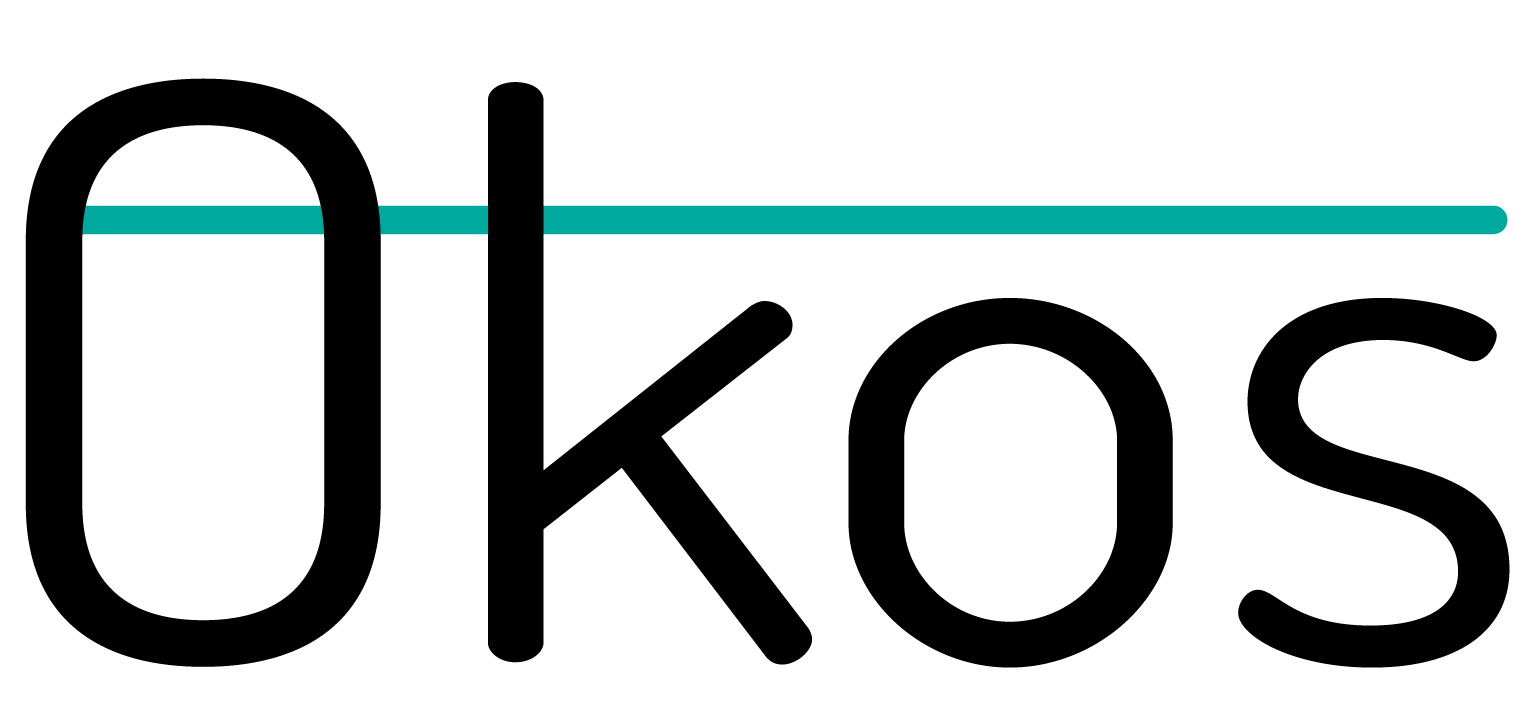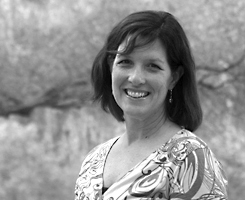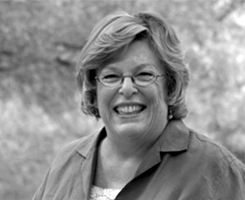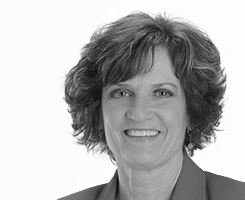By Dawn Dolan, Wine Industry Network
Created to unlock the keys to successfully taking a brand to market, May 22nd’s 3-Tier Wine Symposium, produced by Wine Industry Network (WIN), did just that, taking audience members through the building blocks of creating a successful bid to market. Unique in its focus on small producers, their use of technology quickly backed that up, as symposium goers used their cell phones to fill out polls online, with real time results showing that the vast majority of attendees were well under a 10,000-case production level. Stated goals for the day were to provide new perspectives, create new ideas, and give wineries a good start at an implementable plan of action.
Opening remarks were made by George Christie, President and CEO of WIN, followed by remarks from moderator Laura Webb, of Okos Partners. Webb jumped right into the first session, giving a 30,000 foot overview on distribution for the audience. Panelists’ discussion centered on legal issues, challenges in today’s market environment, and the evolution of the distribution network.
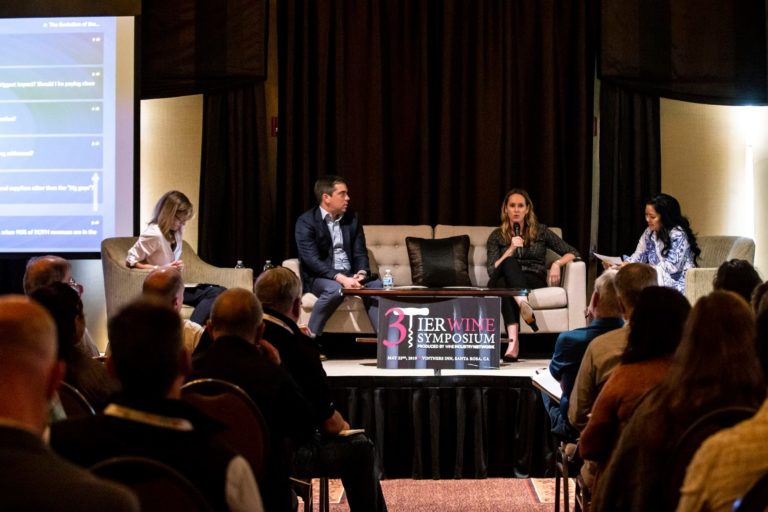
LibDib’s Cheryl Durzy discussed her company’s disruptive distribution mechanism, which has already caused a shift for many producers, her goal being, “A technology solution, with 3-tier access for all” added to, “one case at a time brand building.”
The next session focused on the distributor mindset, and audience members were able to learn what happens from the distributor’s side, learning about the thought process and costs that go into the incubation of a new brand. Understanding what the distributor needs from a winery seeking to retain them was a crucial component. Doing your research and having a plan are of paramount importance to the distributors. Noted Jeff Roth, of VP of Breakthrough Beverage Group, “What three or four brands do you want to be next to on the shelf? These are the conversations [with your distributor] that you need to have.”
A broad theme of finding a distributor that meets with your needs surfaced, as did the understanding that one distributor’s goals may not be compatible with your own, and to make the time to find the right match. Audience members echoed concerns in their posted questions, which included, “What should the plan we bring to a distributor meeting include?” And “What will the distributor provide for me?”
After a short break, session three reviewed the strategies for entering into negotiations with a distributor, with panelists sharing common mistakes that producers (wineries) often make. “Come to the table with resources to grow your business. Be willing to partner so they’ll be a willing partner as well,” suggested Gordon Palmateer, founder of Palmateer Wine Group. A discussion of the costs the producer will bear caused some uproar, but the understanding is that no longer does the distributor do it all for the winery they represent. Having skin in the game and good communication are keys to success.
After a catered lunch by John Ash, the sessions drilled down into the nitty gritty details of the wholesale business. Session four offered insights on launching a new brand and expanding your market. Here, as in previous sessions, planning was key, with market research, target demographics, and “warm market” launches all considered winning factors in pre-planning a new launch. Spend amounts per case were talked over, along with percentages for building out a new brand launch, and time to profitability. Audience questions touched on concerns of expenditures, and where to invest, as well as possible missed steps in a launch, and converting from primarily DTC to becoming a brand with both wholesale and DTC.

Following on this discussion, the next panel discussed how to get your fair share of attention from your distributor. Local wine guru Mike De Loach, owner and president of MD Wine Industry Consulting shared his thoughts, “Blitz! An all-hands on deck where you meet everyone in the state you are targeting.” This was necessary to create buzz and demand for a new launch, he stated. Panelists discussed incentivizing your distributor’s sales staff, and best practices for doing that.
Flowing from this session into the next with the topic of how market visits are changing, speakers at session six offered up wisdom for handling these essential and unfortunately expensive pieces of your marketing plan. Audience questions included, Who should I go see, What should I do to prep for a market visit, What should my ride-along expectations be, and Can I ask for a placement list?
“Connect to social media,” “Shout your scores,” and “Have something specific to say” were recommendations that came forward. Targeting the top three accounts, meeting independently with top performing store managers, and spending time in one or two key places to develop relationships were all offered up, solidifying that this is still a business based on interpersonal relationships. Jim Sweeney, Director of Sales & Marketing at Humboldt Distillery told the audience that action after the visit was another key, “Your market visit is only as good as your follow up.”
The last session of the day took the audience through the planning phase, accentuating what will get you and your brand noticed by your distributor. “Success is not an accident!” noted Senior Consultant of Palmateer Consulting, Chris Lynch. Create and stick to your plan, being flexible as it unfolds. Use data to help invest your resources correctly. Dan Hoban, SVP at Young’s Market Company was straightforward about who he sees succeeding, “A supplier who comes in knowing what works in that market and know how their brand fits in.” Be communicative and available to your distributor were all reiterated concepts. Noted presenter Keith LaVine of Disruption Wine Company, “It takes building blocks for getting it done. How to achieve specific goals necessitates checkpoints along the way.”

Webb, partners in Okos Partners, a consulting group developing solutions for most industries, did an outstanding job moderating the symposium’s topics, taking care to cover the majority of the numerous questions posted by the audience. She closed with the encouragement for the audience to use what they had learned that day and implement it.
See more pictures from the 3 Tier Wine Symposium.
